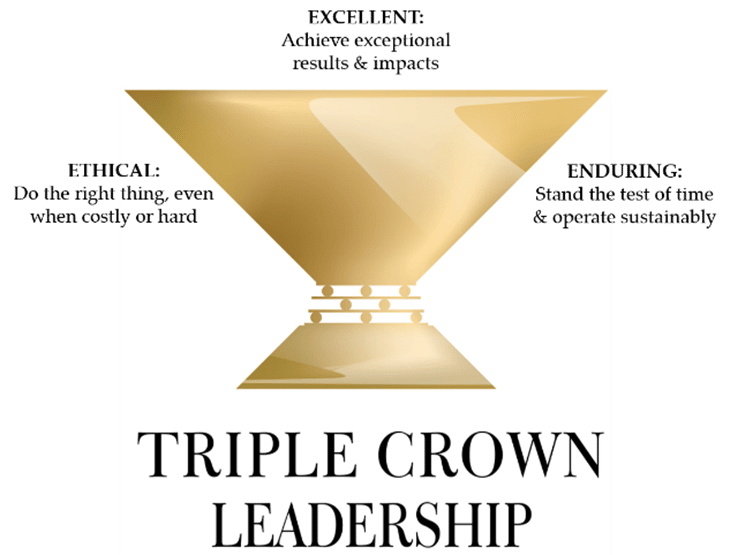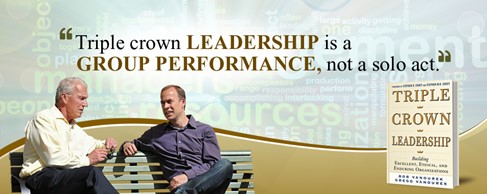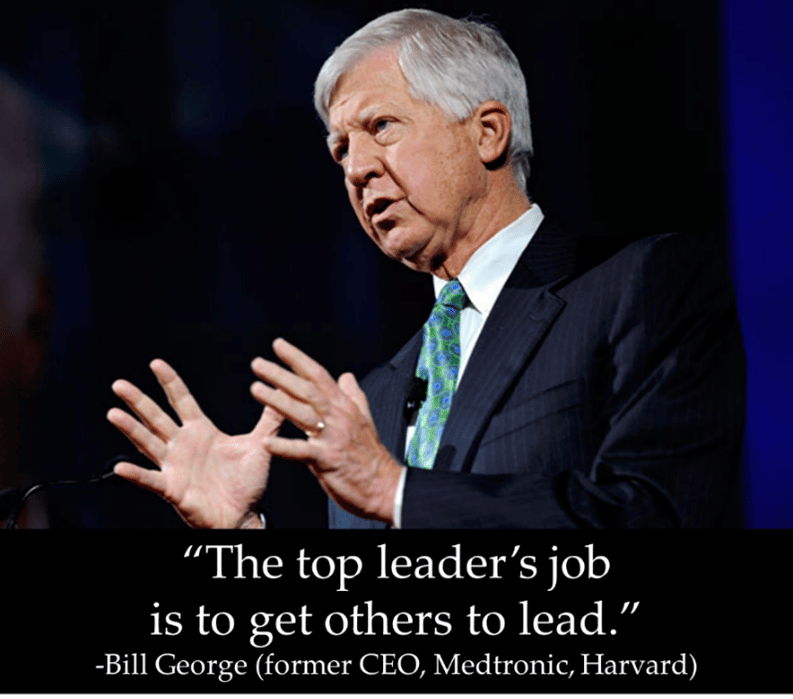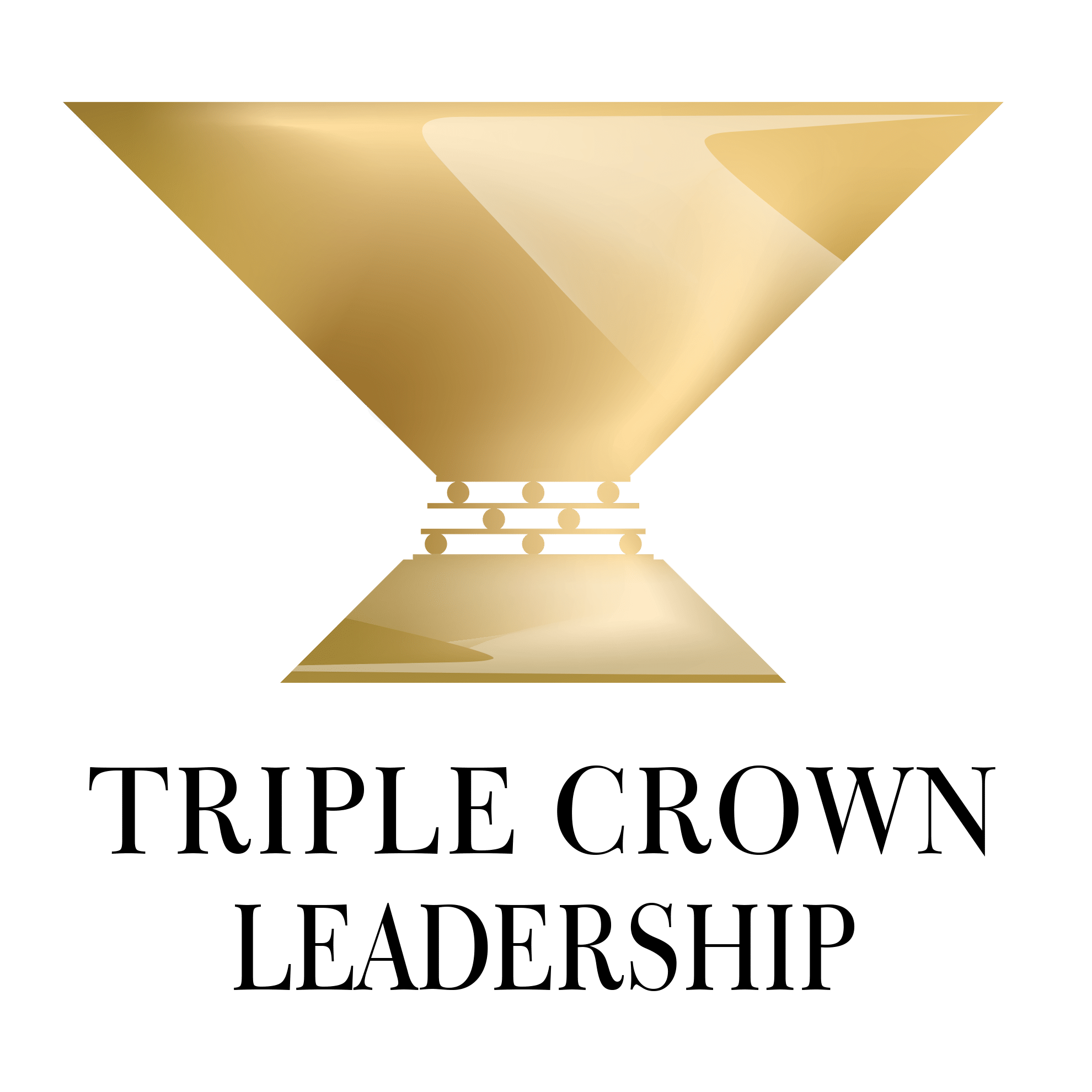One of the most powerful ideas we discovered in our research for our book, Triple Crown Leadership—including interviewing leaders in 61 organizations in 11 countries—is one we call “stewards” (and building a culture of stewardship). It’s one of the most unusual and counterintuitive leadership practices we’ve ever discovered.
A “steward” is a person who is responsible for and looks after other people or property. It’s a position of trust. It entails being the guardian of something valuable. Building a culture of stewardship entails nothing less than changing the way we think about and practice leadership.
Changing the Focus
Most people think about leadership from the top down, conflating leadership with authority. But triple crown leadership works up, down, and sideways.
Where would Shakespeare’s Henry V be without his “band of brothers?” Where would Lincoln be without his “team of rivals?” Where would the Hobbit Frodo Baggins be without Samwise Gamgee, Merry, Pippin, Gandalf, Aragorn, Galadriel, Eowyn, and others in Tolkien’s ring quest?
Triple crown leadership—which builds organizations that are excellent, ethical, and enduring—unleashes the extraordinary potential latent in people that languishes in far too many organizations.

Once activated, such leadership can be transformative for the organization and life-changing for the people involved. Unfortunately, this leadership dynamic is all too rare.
For decades, leadership observers have known that the quest for a brilliant or heroic leader to save our organizations is a false search destined to disappoint. Yet we continue to await such saviors. We focus too much on the traits and skills of the people at the top and their leadership style, whether it be directive, transformational, or whatever.
This way of thinking is profoundly limiting and has damaging consequences. Too many workers forgo their own initiative and leadership potential as they defer to their leaders, awaiting direction. Too many leaders step on the initiative and leadership potential of their workers, assuming that, as leaders, they must always have the answers and provide direction.
Without unleashing the initiative, creativity, and leadership latent in people, organizations underperform dramatically.

Personal Values Exercise
Complete this exercise to identify your personal values. It will help you develop self-awareness, including clarity about what’s most important to you in life and work, and serve as a safe harbor for you to return to when things are tough.
Leadership Is a Group Performance
Stewardship entails a mindset shift about leadership—changing the focus from the person at the top to the act of leading, which is available to all. Focus on the verb, “leading,” and not the noun, “leader.”
Leadership is a group performance, not a solo act.

It’s plural, not singular. (See our article, “Unleashing Leaders in Your Organization.”)
“The top leader’s job is to get others to lead.”
– Bill George, leadership author

The “Colors” and the Culture
In triple crown organizations, stewards have their regular job (in marketing, finance, customer service, or whatever) but also a second job of protecting the organization’s “colors” and “culture of character.”
“Colors,” using our metaphor of thoroughbred horseracing (with the jockey and horse wearing the colors of the stable they represent), are the organization’s shared purpose, values, and vision:
- Shared Purpose: Why the organization exists; its fundamental reason for being.
- Shared Values: What the organization deems most important, with the sacrosanct behaviors it requires.
- Shared Vision: The clear and compelling picture of what the organization aspires to achieve in the future—of what success looks like.
By “culture of character,” we mean a healthy values-based culture that provides the foundation for building an excellent, ethical, and enduring organization.
“Culture isn’t just one aspect of the game—it is the game.”
-Lou Gerstner, former CEO, IBM
In this approach, all workers are not only responsible for their functional area (in sales, operations, etc.) but also for protecting and defending the colors (purpose, values, and vision) and the culture of character.
Beyond Delegation and Empowerment
This approach goes beyond delegating, and beyond empowering.
Traditional empowerment initiatives often fall short. In collaboration mode, the process sometimes gets bogged down as everyone chimes in, with no one driving the process forward. The consensus that emerges is often a pale shadow of what the situation requires, or it is a torturously slow exercise that accomplishes too little too late.
Examples of the disastrous “groupthink” that can result are legion, from the Bay of Pigs debacle to space shuttle disasters and postwar military occupations.
In another common form of empowerment, leaders delegate some authority and responsibility to their direct reports. Such authority can be revoked under pressure, whipsawing back to directive mode, generating frustration
or cynicism.
Unleashing Other Leaders
Triple crown leaders employ a different approach: unleashing leaders throughout the organization by giving them an automatic license to lead.

With this approach, the shared purpose, values, and vision guide the leaders. Workers operate in a more developed state of empowerment, in which the freedom to act isn’t granted by a higher authority but is instead expected in the culture and enabled by the colors.
Of course, this requires a high level of trust—trust that is granted and earned.
“While delegation is intellectual, entrusting is visceral.”
-Stephen M. R. Covey

People in the organization, regardless of title, have a license to act and lead, as long as they do so in accordance with the organization’s colors and culture of character.
When unleashed this way—and backed with the resources, training, and support they need—they’re much more likely to achieve exceptional results. Workers feel a visceral connection with the organization, wanting to give it their all.
A Simple Example: Building a Culture of Stewardship
Many large organizations have thick employee handbooks, sometimes reaching hundreds of pages with all sorts of policies, procedures, and legal jargon to account for all manner of situations, risks, and contingencies.
Nordstrom took a different approach. For years, its employee handbook was a small card with these words:
“Welcome to Nordstrom. We’re glad to have you with our company.
Our #1 goal is to provide outstanding customer service.
Set both your personal and professional goals high.
We have great confidence in your ability to achieve them.
Nordstrom Rules: Rule #1: Use best judgment in all situations.
There will be no additional rules. Please feel free to ask your department manager,
store manager, or division general manager any question at any time.”
Simple but powerful. Trust. Unleash.
Summary
Triple crown leaders move beyond delegation and empowerment to provide an automatic license to act and lead in line with the colors (purpose, values, and vision) and culture of character.
Stewards guard the organization’s values and monitor its ethics, evaluating both short- and long-term considerations. They model the desired behavior of the enterprise. Stewards work on the business, not just in it. They actively step outside their functional positions to influence how others behave, and they reinforce the colors and culture. In so doing, they give the organization its soul.
Stewards make better decisions faster because they’re closer to the action, bringing the diversity of multiple perspectives. They boost creativity and innovation, generating a feeling of pride in the organization that reverberates throughout the community, attracting other high performers and customers.
Stewards help the organization run its best race—with honor—reaching heights few thought possible.
Bottom Line: Unleash other leaders throughout the organization and build a culture of stewardship.
Reflection Questions
- To what extent are your colleagues waiting for instructions about what to do?
- To what extent do your colleagues, regardless of their title, have a license to act as long as they uphold the shared purpose, values, and vision?
- To what extent are you encouraging and enabling stewardship?
- To what extent is your board practicing stewardship?
- To what extent is your CEO a steward?
- To what extent is your management team practicing stewardship?
- To what extent are people without formal authority practicing stewardship?
- How can you help promote a stronger leadership dynamic and culture?

Leadership Derailers Assessment
Take this assessment to identify what’s inhibiting your leadership effectiveness. It will help you develop self-awareness and identify ways to improve your leadership.
Tools for You
- Leadership Derailers Assessment to help you identify what’s inhibiting your leadership effectiveness
- Personal Values Exercise to help you determine and clarify what’s most important to you
- Alignment Scorecard to help you assess your organization’s level of alignment
Related Articles and Resources
- “Culture as a Competitive Advantage“
- “How to Change Your Organizational Culture“
- “Company Culture Resources“
- “Are You Strong Enough to Be a ‘Voice of One’?“
- “The Dangers of Toxic Micro-Cultures“
Postscript: Quotations on Culture and Stewards
- “Leaders don’t create followers; they create more leaders.” -Tom Peters
- “Leadership is your choice, not your title.” -Stephen R. Covey
- “I view my job as not to make the decision myself if I can avoid it, so I’ll ask them, ‘How does this fit in with our values, our mission, and our plan?'”-Stephen Rothstein, former CEO, Perkins School for the Blind
- “The old organizational model where a few people decide things, and then ‘manage’ everyone else, just can’t function in today’s environment … A team is characterized by the fact that every single person is a ‘changemaker.'” -Bill Drayton, Founder & CEO, Ashoka
- “As long as they understand our long-term vision and values, it makes more sense for them to be the ones who come up with the idea.” -Tony Hsieh, former CEO, Zappos
- “Culture is king.” -Petter Stordalen, Owner, Nordic Choice Hotels, and CEO, Strawberry
- “Culture eats strategy for breakfast, technology for lunch, and products for dinner, and soon thereafter everything else too!” -Bill Aulet, Managing Director, Martin Trust Center for Entrepreneurship, MIT
- “For individuals, character is destiny. For organizations, culture is destiny.” -Tony Hsieh, former CEO, Zappos
- “Leadership at Neusoft is not single people, not the CEO, COO, or the CFO. We need all the leaders from the bottom up.” -Liu Jiren, Chairman, Neusoft
- “Be mindful that there is incredible leadership all around you. Go find it. Go tap it. Go mine it.” -David Barger, co-founder, JetBlue Airways

Triple Crown Leadership Newsletter
Join our community. Sign up now and get our monthly inspirations (new articles, announcements, opportunities, resources, and more). Welcome!
+++++++++++++++++++++++
Gregg Vanourek and Bob Vanourek are leadership practitioners, teachers, and award-winning authors (and son and father). They are co-authors of Triple Crown Leadership: Building Excellent, Ethical, and Enduring Organizations, a winner of the International Book Awards. Check out their Leadership Derailers Assessment or get their monthly newsletter. If you found value in this, please forward it to a friend. Every little bit helps!


